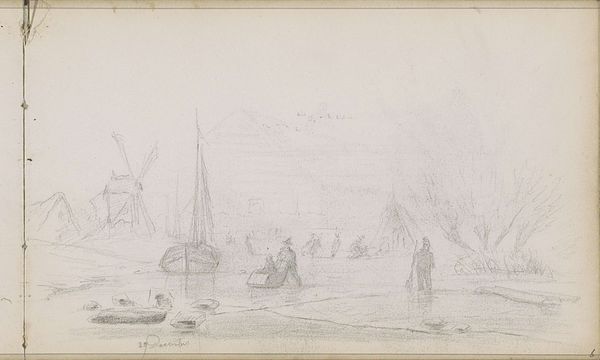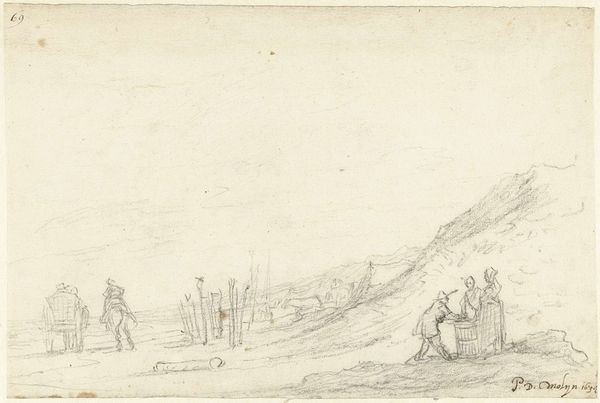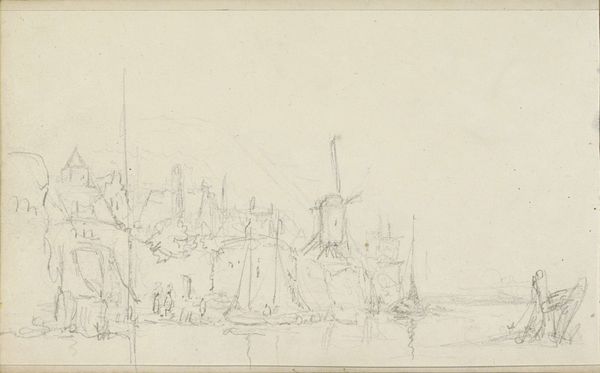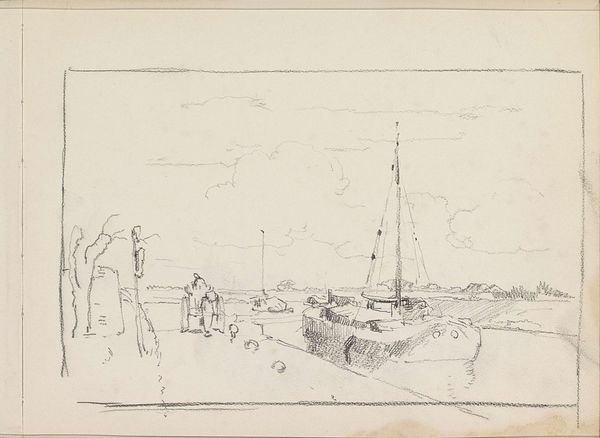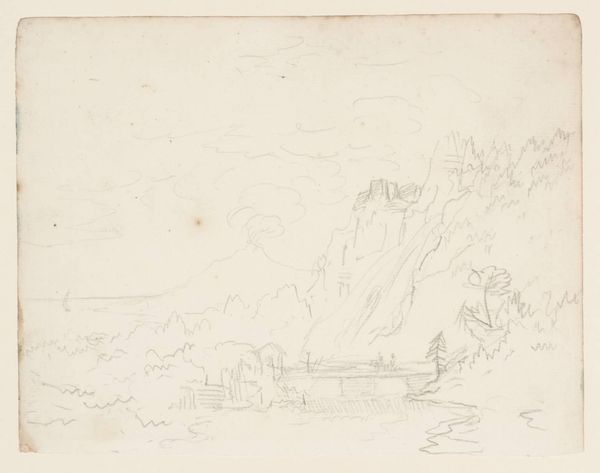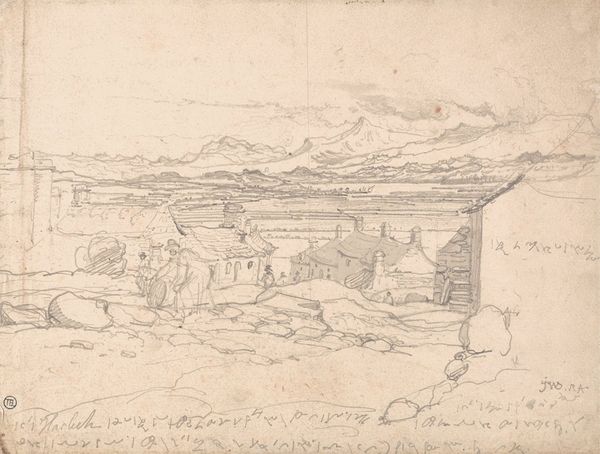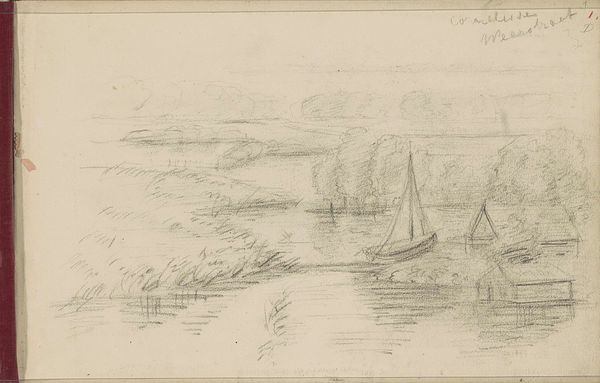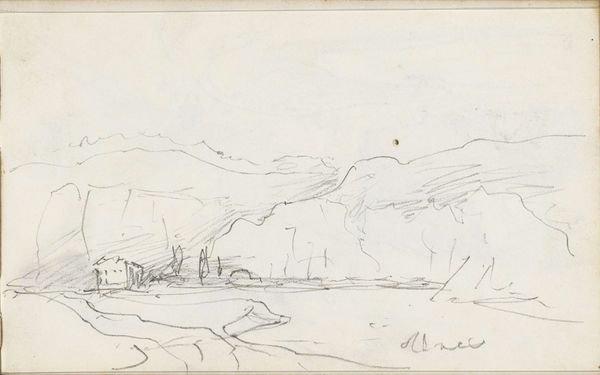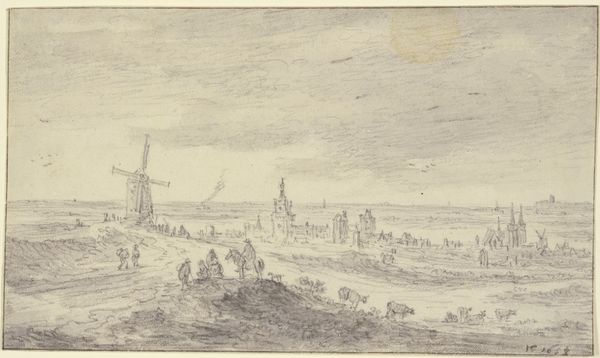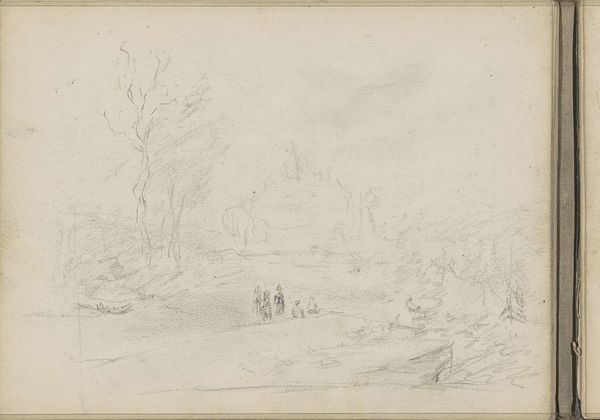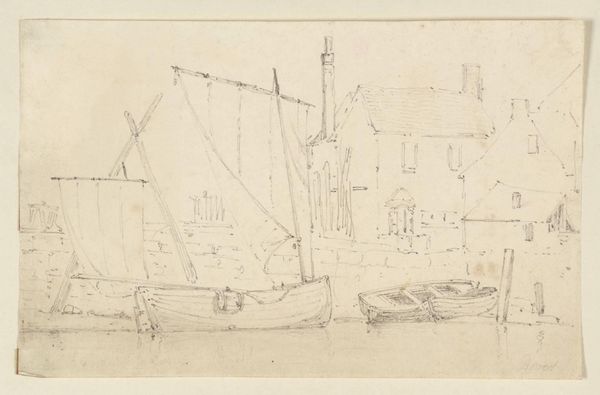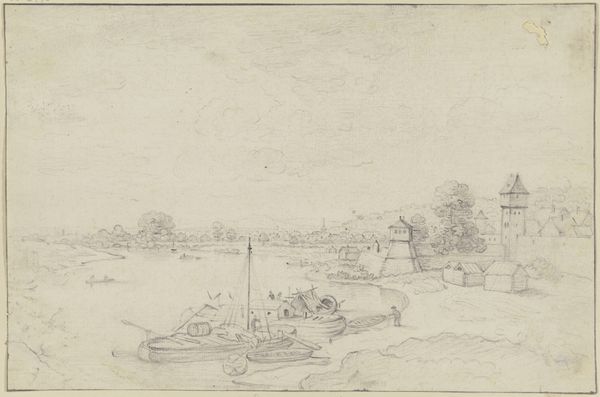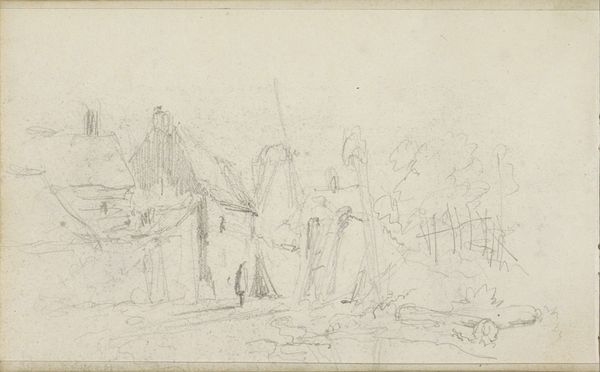
drawing, pencil
#
drawing
#
toned paper
#
light pencil work
#
quirky sketch
#
sketch book
#
landscape
#
personal sketchbook
#
sketchwork
#
ink drawing experimentation
#
pen-ink sketch
#
pencil
#
sketchbook drawing
#
genre-painting
#
sketchbook art
#
realism
Dimensions: height 184 mm, width 282 mm
Copyright: Rijks Museum: Open Domain
Curator: This drawing by Willem Cornelis Rip, from 1874, is titled "Heuvellandschap met figuren aan een kade"—or "Hilly Landscape with Figures on a Quay." It’s executed in pencil on toned paper. Editor: My immediate sense is of stillness, despite the implied activity. The light pencil work creates this almost dreamlike quality, as if we are observing a memory. Curator: It's interesting you say that, because this sketch seems less about precise topographical detail and more about capturing the essence of a bustling port scene. It feels like Rip was experimenting with capturing the spirit of a place, the transience of life. Editor: Precisely. And I wonder, in this period of rapid industrialization, how such depictions of quaint harbors and traditional commerce served as counterpoints—perhaps nostalgic, even resistant—to those changes. Curator: It’s certainly plausible. Notice the almost archetypal elements: figures huddled together, perhaps merchants or travelers, the ever-present ships hinting at journeys and exchange, all recurring symbols found in many different cultural representations. Editor: Yes, but these symbols become potent only through lived experience, right? These quaysides were places of both opportunity and exploitation. I’m compelled to consider the untold stories, the unequal power dynamics present in such transit hubs. Curator: Of course. And the "toned paper" itself acts as a symbol, creating a sense of faded history, like an antique document unearthed from the past. The medium and style really converge to emphasize this sense of bygone eras. Editor: And how might this yearning for the past serve specific agendas? By overlooking the lives of the working classes or perhaps idealizing rural life for the burgeoning middle classes seeking an escape from industrialized cities? These sketched harbors conceal more than they reveal. Curator: An astute point. The visual culture is inevitably linked to larger socio-political structures, so perhaps that sense of peace and serenity might carry an implicit socio-political weight of earlier times, but now observed and depicted by an artist rooted in new visual codes. Editor: Precisely. It underscores the complexities within these seemingly straightforward landscapes, reminding us of the constant negotiation between image, identity, and power. Curator: This little sketch provokes much grander lines of inquiry, doesn't it? Editor: Indeed, It proves that the humblest sketch can reflect entire worlds.
Comments
No comments
Be the first to comment and join the conversation on the ultimate creative platform.
